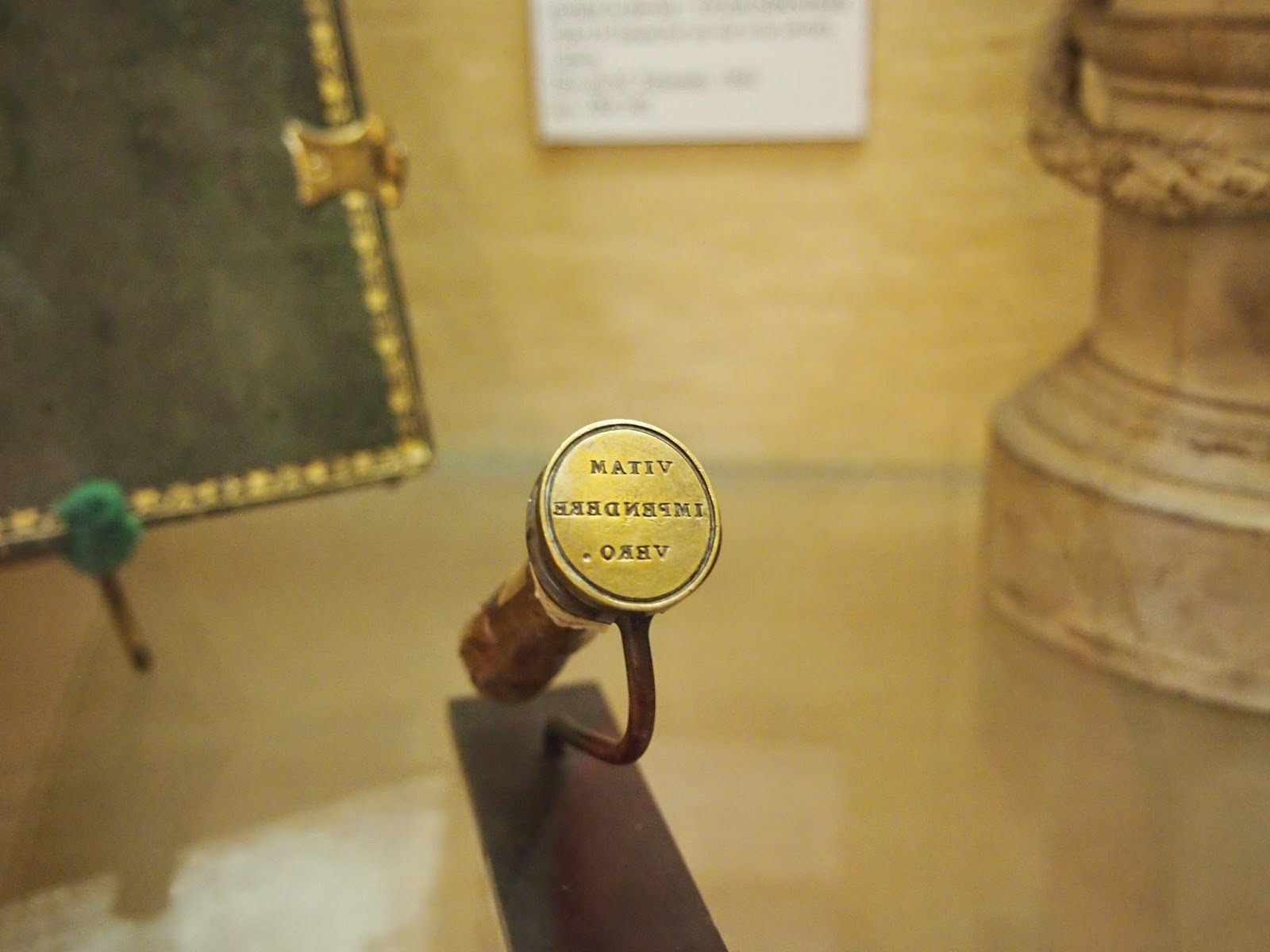So the Carnavalet is in the Marais district, which has evolved over the centuries from an aristocratic neighborhood of hôtels particuliers to a Jewish quarter to a gay neighborhood. The first time I visited Paris (ten years ago!), the Marais was thought of as not being very touristy, but nowadays it sees its share of tourist traffic. In fact, the Marais itself represents a phenomenon that the Carnavalet illustrates: the ways in which Paris has changed and continues to change. Because Hausmann so radically reinvented the city starting in the mid-19th-century, it's easy to believe that Paris has always looked the way it looks now. Very little of medieval and Renaissance Paris remains. A lot of what one sees at the Carnavalet is paintings of the city in its earlier incarnations, restored rooms from various hôtels particuliers of the 18th century, and even archaeological findings from the days when the Romans lived here and called it "Lutetia." All in all it is a great education. I don't know whether I want to read a book on Parisian history to understand the Carnavalet better or just keep going to the Carnavalet until I understand the history of Paris better. Maybe both.
In addition to the Carnavalet, which is the museum of the history of Paris, it offers a lot of good shopping and a lot of good falafel. The famous L'As du Falafel restaurant is there; I like to be iconoclastic and hit the falafel stand across from L'As because the line is shorter. After the Carnavalet I enjoyed my falafel and went for a gelato at Amorino next to the Place de Vosges--gotta eat enough this week to give me good culinary memories to last a year, after all.
Meanwhile, I did take some pictures at the Carnavalet. Click through!
The garden is taking more of a potager direction this year.
Still some beautiful flowers, though, too.
The first room you enter is my favorite: full of shop signs from before the streets began to be numbered. This one offers a free croissant to anyone who buys a coffee for 15 or 20 centimes.
Model of a tram car from the beginning of the 20th century
A cat from a shop sign
"Au Persan" (At the Sign of the Persian), a cashmere shop
Newspaper sign
The Carnavalet is another "worth going just to see the building" museum.
Obligatory mirrored-room selfie
Rousseau's seal: "Devote your life to the truth."
A clock depicting Voltaire and Rousseau arguing--
the sort of thing that makes me think I will NEVER fully understand the French.
Louis XVI-era room--the Carnavalet has several rooms like this,
salvaged/reconstructed from other hôtels particuliers.
The invention of the hot-air balloon spawned a craze for ballooning-themed decorative arts.
This hand and a foot are the only remaining pieces of a statue of Louis XV
that was destroyed in the Revolution.
A painting that depicts public celebrations of the birth of the Dauphin, 1782. This area is Les Halles which, today, is a large underground mall and a rather disagreeable metro/RER station.
17th-century painted and gilded ceiling from a different hôtel particulier. It was conserved in the town hall of the 8th arrondissement until it came to the Carnavalet in 1879, and was restored in the late 90s/early 2000s.
The back garden.
My students taking a museum break
Model of the Arènes de Lutèce, which we visited last week.
L'église St-Paul St-Louis: you will see it en route from the St-Paul metro stop to the Carnavalet.




















No comments:
Post a Comment